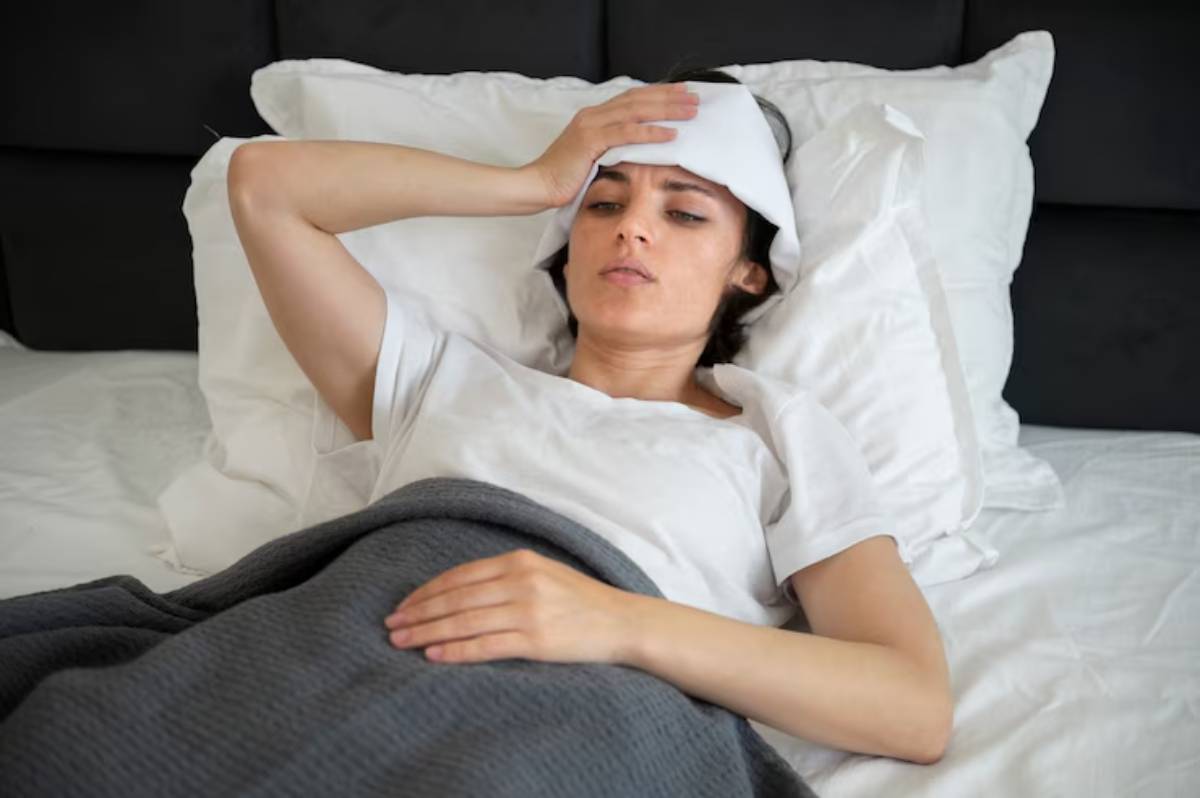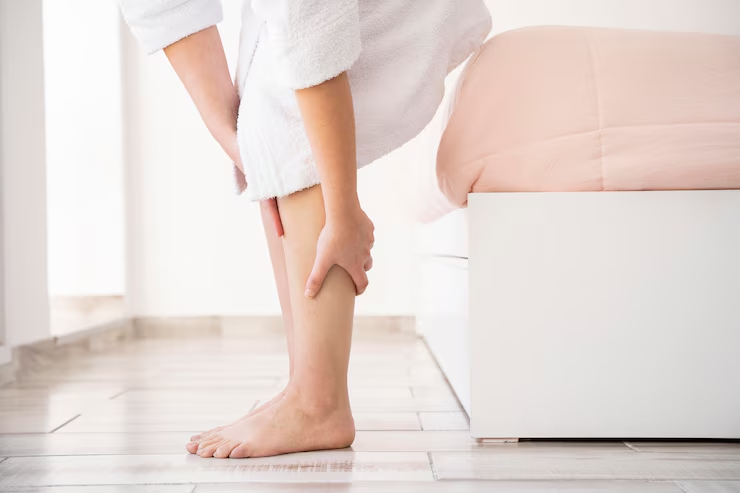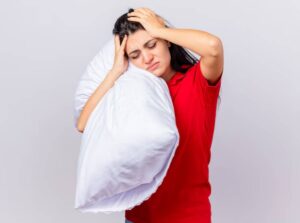The Health Blog

Addressing Restless Leg Syndrome Naturally
Ever had that moment when you’re ready for bed — finally — and as soon as you settle in, your legs start to twitch or buzz? It’s not pain exactly. Not even discomfort in the usual sense. But it’s enough to keep you from sleeping.
You move. You stretch. You rub your legs. Nothing really works, not for long. And you wonder… why does this happen right when the day is supposed to end?
If any of this sounds familiar, you might be dealing with Restless Leg Syndrome (RLS) — a condition that many experience but few talk about openly.
Let’s change that.
Because while RLS can be frustrating, even exhausting, there are ways to manage it — gently, naturally, and without jumping straight to heavy medications.
What Is Restless Leg Syndrome, Really?
RLS is a neurological condition that causes an uncontrollable urge to move the legs, especially at night or when resting. The sensation? It varies. Some describe it as tingling. Others say crawling, itching, or pulling. The only consistent part is that it doesn’t stop — unless you move.
That’s the catch. Movement brings temporary relief, but rest brings the symptoms back. Which means falling asleep, or staying asleep, becomes a challenge.
It’s not just a quirky bedtime annoyance. It’s a sleep disorder. And over time, it wears you down.
But there’s hope. Plenty of it.
What Causes RLS?

The full cause isn’t always clear, but here are some common factors:
- Low iron or ferritin levels
- Dopamine imbalances in the brain
- Chronic stress or anxiety
- Hormonal changes (pregnancy, menopause)
- Certain medications or underlying conditions
- Genetics — yes, it often runs in families
But let’s pause for a moment. You’re not here for medical jargon. You’re here to find ways to feel better — and to sleep better — without going straight to prescription pills.
So let’s talk about natural treatments for RLS that people are actually using. Remedies that feel human. Grounded. Real.
Restless Leg Syndrome Remedies That Don’t Involve a Pharmacy

First, it’s important to note: natural doesn’t mean “magic.” It means gentle, accessible, and usually side-effect-free. Some methods might work quickly. Others take time. But together, they can make a difference.
Let’s dig into a few that are worth trying.
1. Magnesium — The Calming Mineral
Magnesium helps relax the muscles and soothe the nervous system. A deficiency can lead to cramps, twitching, or — you guessed it — restless legs.
How to add it:
- Eat magnesium-rich foods: spinach, pumpkin seeds, almonds, black beans
- Try an Epsom salt bath (magnesium sulfate soaks right into the skin)
- Consider a low-dose magnesium supplement before bed
Think of it as bedtime’s best friend. A small shift, big payoff.
2. Stretching and Gentle Movement Before Bed
Here’s the thing: RLS often gets worse when you stop moving. So adding intentional movement before sleep can calm the storm before it starts.
Try:
- Calf stretches against the wall
- Slow squats or forward bends
- Light yoga or tai chi
- A short walk around the block after dinner
The goal isn’t to tire yourself out. It’s to settle the legs — and send them the message that rest is coming.
3. Iron and Ferritin Levels — Worth Checking
Iron plays a key role in dopamine regulation, and low iron is strongly linked to RLS. But it’s not just iron — it’s ferritin, which reflects iron storage.
Many people with RLS have normal iron but low ferritin. It’s a subtle distinction, but an important one.
Natural ways to support iron:
- Eat more iron-rich foods: red meat, lentils, tofu, leafy greens
- Pair plant-based iron with vitamin C (like bell peppers or citrus) for better absorption
- Avoid drinking coffee or tea with iron-rich meals — they block absorption
You can also ask your doctor to check ferritin levels with a simple blood test. It might explain more than you think.
4. Warm (or Cool) Compresses
Sometimes, the simplest things bring the most relief.
Warm compresses can relax the muscles. Cool ones can numb the tingling. Everyone’s body responds differently — try both to see what your legs prefer.
A warm rice sock. A hot water bottle. A cool gel pack. These aren’t fancy fixes, but they’re often surprisingly effective.
Use one during your evening wind-down. Let your legs know: you’re listening.
5. Mindfulness and Breathwork
Here’s where things get a little softer.
RLS is more than just a leg issue. It’s a nervous system issue. Stress, tension, and overstimulation can all make symptoms worse.
Mindfulness doesn’t “cure” RLS. But it helps regulate the part of the body that fuels it.
Try this simple bedtime breathing routine:
- Sit or lie down comfortably
- Inhale through the nose for 4 counts
- Exhale through the mouth for 6 counts
- Repeat slowly for 5–10 minutes
Let the breath be your anchor. Over time, the nervous system will start to respond.
6. Sleep-Friendly Habits That Actually Work
You’ve probably heard all the usual sleep hygiene tips before. But when it comes to RLS, some of them are especially important.
Helpful tweaks:
- Stick to the same sleep and wake times
- Avoid caffeine — even in the afternoon
- Keep the bedroom dark, cool, and quiet
- Limit screen time at least 30 minutes before bed
- Avoid alcohol in the evening — it may make symptoms worse
RLS doesn’t like chaos. Consistency brings calm.
7. Weighted Blankets: Surprising Support
Some people find that using a weighted blanket helps reduce the need to move their legs. The gentle pressure mimics a calming touch and may reduce sensory overload.
It’s not a fix for everyone — some find the weight too stimulating — but it’s worth testing out if the restlessness feels more neurological than muscular.
When Natural Isn’t Enough

Let’s be honest — natural remedies are powerful, but they’re not always enough on their own. And that’s okay.
If your RLS is severe, waking you up nightly, or starting to affect your mood or ability to function, it’s worth speaking with a healthcare provider. There are prescription options that can help — and you don’t have to avoid them out of pride or fear.
Think of natural treatments for RLS as the foundation. Medications, if needed, are just an added layer. Both can work together.
Building a Calmer Bedtime, One Step at a Time
Living with RLS can feel maddening. It’s invisible, unpredictable, and just annoying enough to ruin what should be the most peaceful part of your day.
But there’s a kind of relief that comes from understanding it — from building a little toolkit of habits and remedies that help bring your legs (and your nights) back under your control.
Start small. Try one thing. A warm bath. A stretch before bed. Maybe a few extra almonds at lunch.
Related read: Establishing a Consistent Sleep Routine









